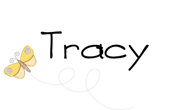What a nice week! My husband had this week off and we spent some time together relaxing, visiting the fair, doing some odd jobs around the house and eating at new restaurants. I also read another book for pleasure! I think I'm up to four this summer! Obviously I'm also reading for professional development, too. Let's talk about Goals 4 & 5, shall we?
Goal 4-Teaching Fluency
Jennifer Seravallo, along with Rasinski and Kuhn, notes that, for the reader, pace, phrasing, intonation, expression, and emphasis shows "the text is making sense and makes sense of the reading." Fluency is a sign of comprehension. Though this can be difficult for a young reader to synthesize, I think. Just as students at beginning reading levels are working so hard to read the words, that their comprehension dips, I think it is also true that students focus on the comprehension, thus their fluency dips. I believe this all seems to come together in about third grade.
As a third grade teacher, I found several strategies that would benefit my students. Some of my favorites include:

As a third grade teacher, I found several strategies that would benefit my students. Some of my favorites include:
4.1 Read It Like You've Always Known It
Seems pretty obvious, right? But I think sometimes it takes students so much effort to figure out a word, that I am just glad they've completed the task. Most likely, I congratulate them and we move on. I need to remember to have them reread that part so it becomes more fluent!
4.16 Read Like a Storyteller
I like this strategy because it incorporates several other strategies into one when the student is ready. Using this strategy, students read like a narrator and like the character taking into account the character's feelings (strategy 4.11) and the tags the author uses with dialog (strategy 4.10 and 4.21) improving their intonation and expression. I can easily see how including these strategies reflects a student's comprehension.
4.19 Snap to the Next Line
So often students read right through punctuation or stop their phrasing when they get to the end of a line of text. By looking ahead to where the punctuation is and snapping to the next line, students see where their voice should stop. This strategy works well with Get Your Eyes Ahead of the Words (4.14) as well as looking at Punctuation at the End of Sentence (4.6) and Punctuation Inside a Sentence (4.8)
4.18 Partners Can Be Fluency Teachers
Teaching the students to really help their classmates when working together is a tricky, but necessary, use of time. By noticing mistakes their partner is making, students are more likely to recognize their own mistakes. Teaching them to guide their partner and perhaps making an anchor chart similar to the one on page 125 is a great reference that students can refer to to coach each other.
This seems to be my favorite chapter so far, since this is where my students struggle most. I feel like I ask the same question over and over to get students to think about their reading. "Tell me what happened in this book/chapter/section." I am so glad to have some new ideas!
The first sentence resonated with me as a book lover myself, "To help students achieve that lost-in-a-book, engaged sort of reading that makes reading enjoyable they have to understand what is going on." So true! How can you get lost if you're not understanding! When looking for comprehension can a child tell you what they read sequentially and include the most important information? Sorting through what is important is difficult for third graders-they want to tell EVERYTHING that happened!
These strategies will be helpful in my reading groups and book discussions:
5.4 Uh-oh...Phew
What a great way to think of plot and important information! Something happens (the first uh-oh) then the problem gets worse (UH-OH), finally there is a solution (Phew!) The visual that accompanies this strategy can easily be used as a kiddo reads through their book. I also love that this can be used with the F-L readers (and beyond)!
 |
| Seravallo, p. 137 |
5.14 Chapter-End Stop Signs
Students at the third grade level (and their parents) feel like they SHOULD be reading chapter books. Whether they are ready or not, and even in complex picture books, a child may not read all in one sitting. This strategy suggests students note what has happened in what they have read, then review those notes before continuing to read. Sticky notes would be the perfect tool since what the students write needs to remain brief and can also be attached to the page they just finished when writing. What a great way to monitor a book club or group as well as discuss perceptions based on what the students have read (different points in the story) as well as the personal connections they have made!
5.20 Not Just Page Decorations
This strategy is so perfect for my advanced readers (P and above)! What great discussions we could have using higher level thinking when noticing the breaks and marks an author uses to signal changes in setting or time!
P.S. Did you notice that my book is spiral bound? For about $5 and an hour or so, I was able to go to the Kinko's/FedEx and have them re-bind my book. I got this idea from I Teach, What's Your Superpower when I was researching this book. Great idea!! This has already proved helpful in reading through this book and I am sure to appreciate it when I am flipping through it as a reference while using with my class!
The next two chapters continue to focus on specific elements of comprehension in fiction; characters and themes/ideas. I'm sure it will be difficult to discuss just a few! See you next week!






































